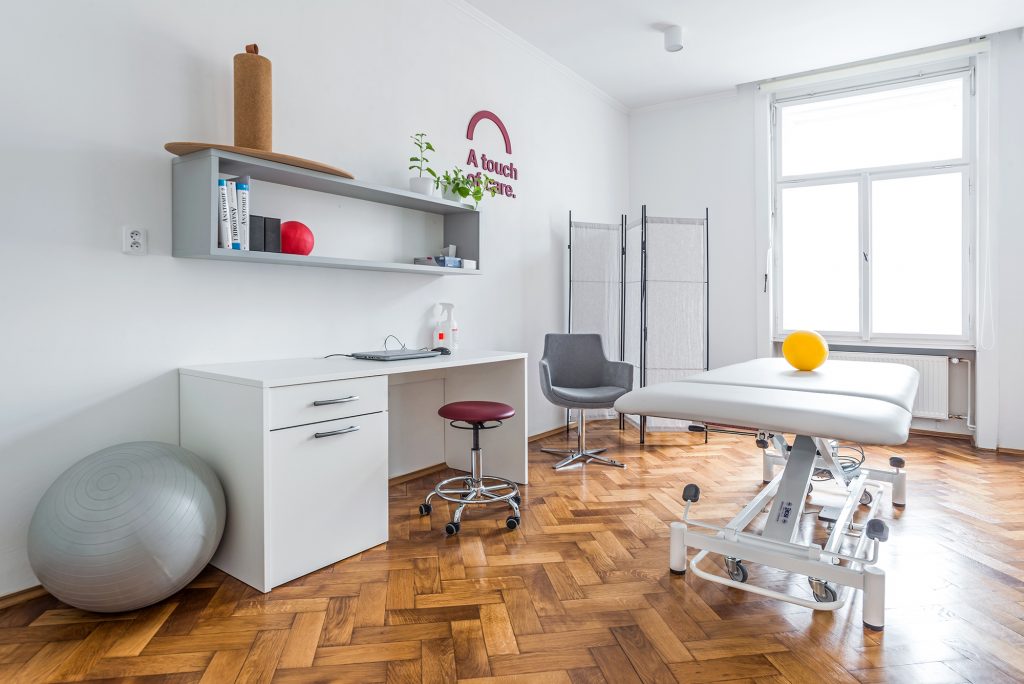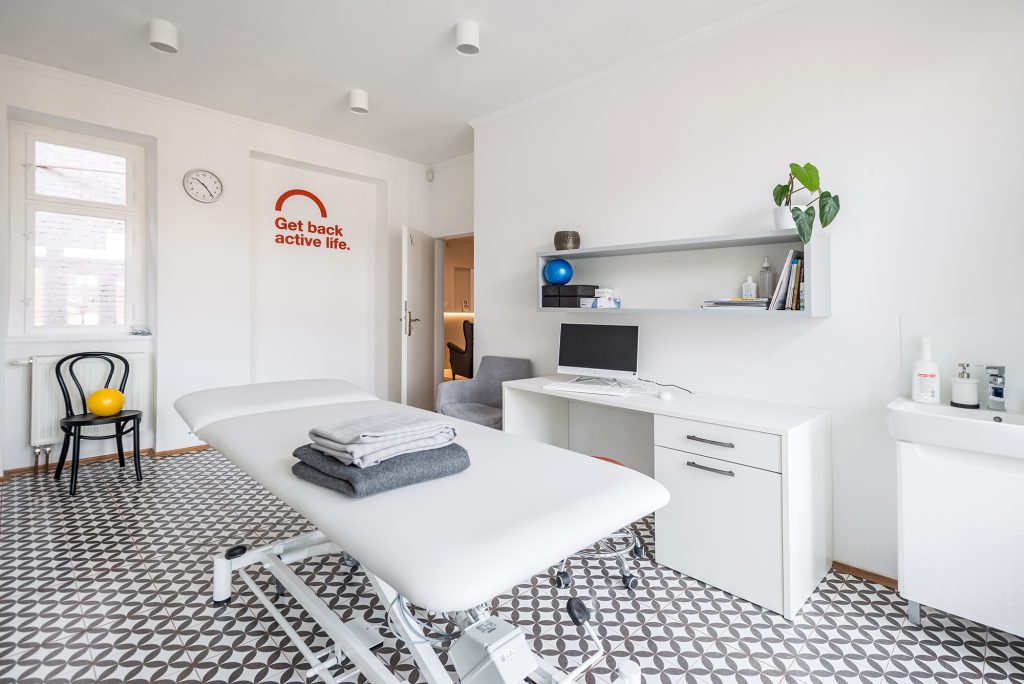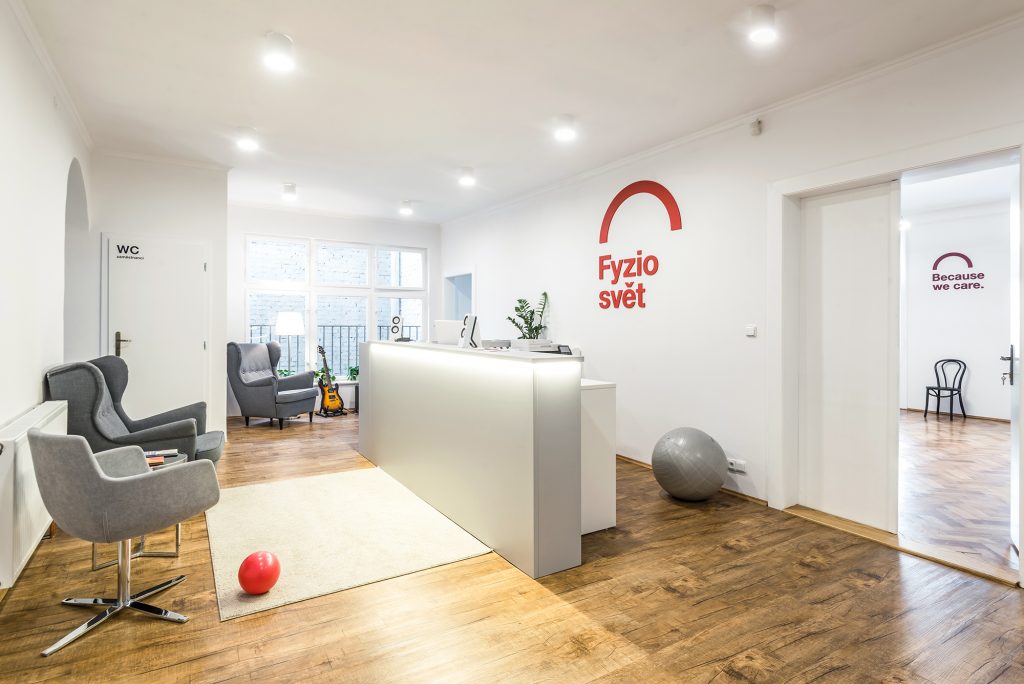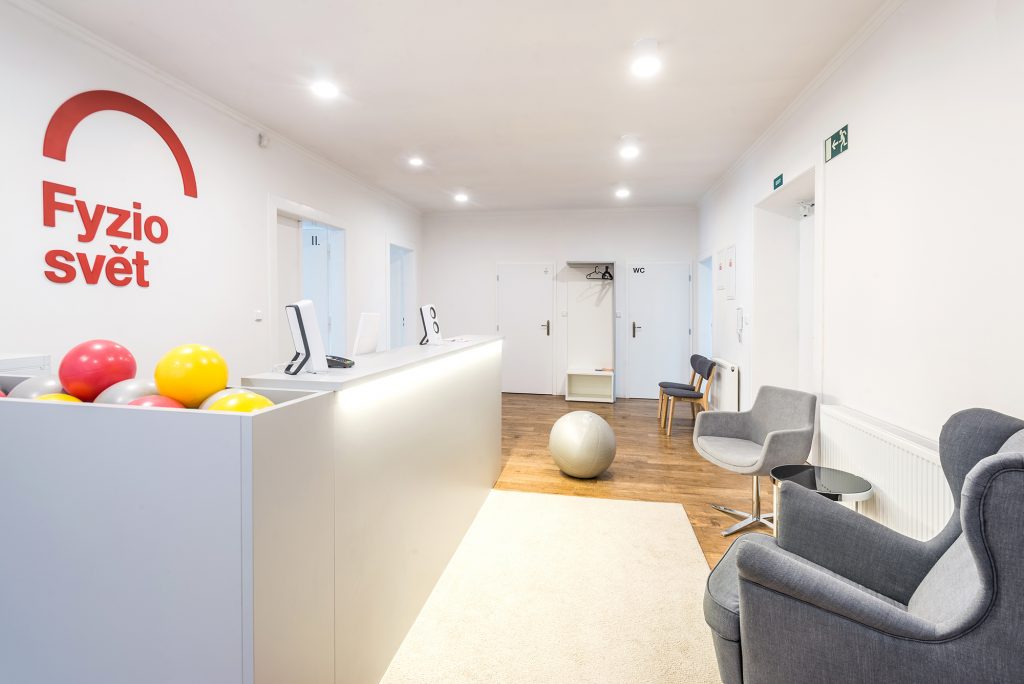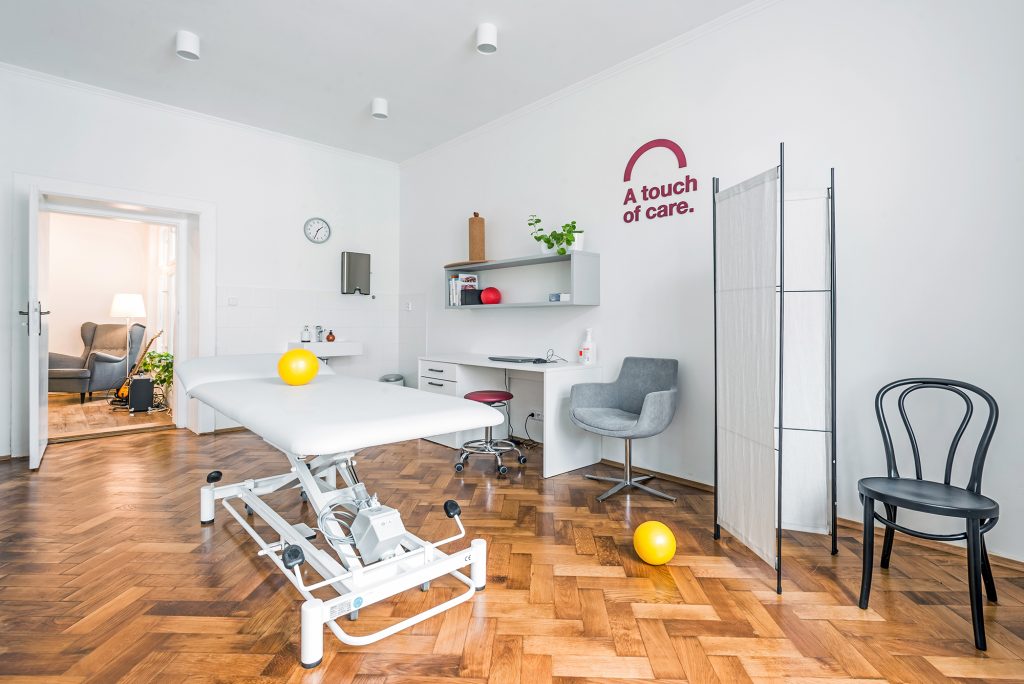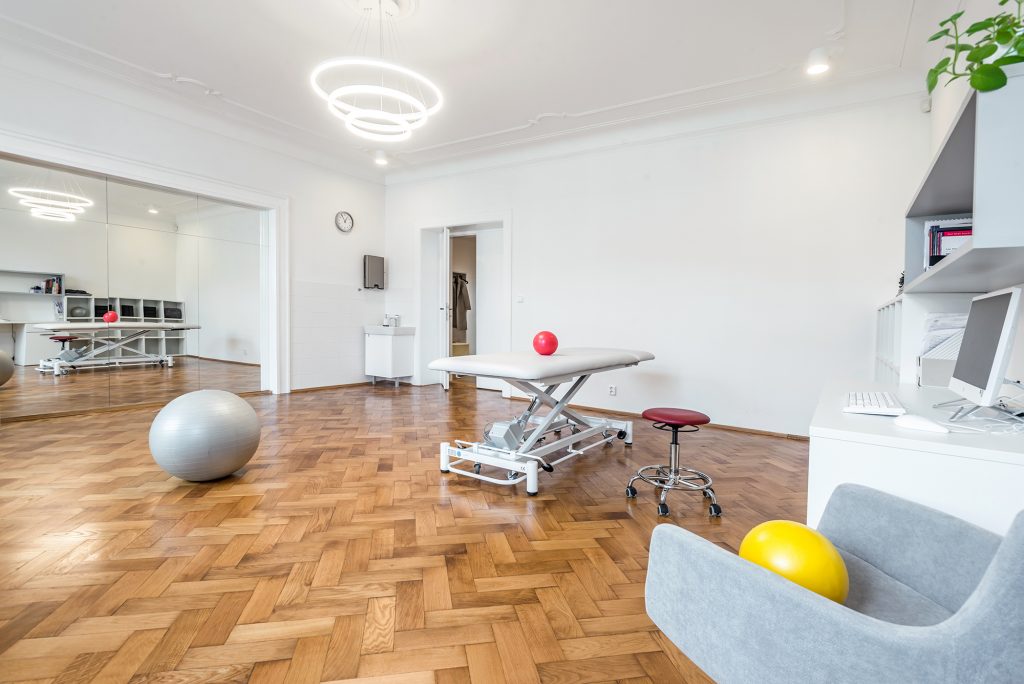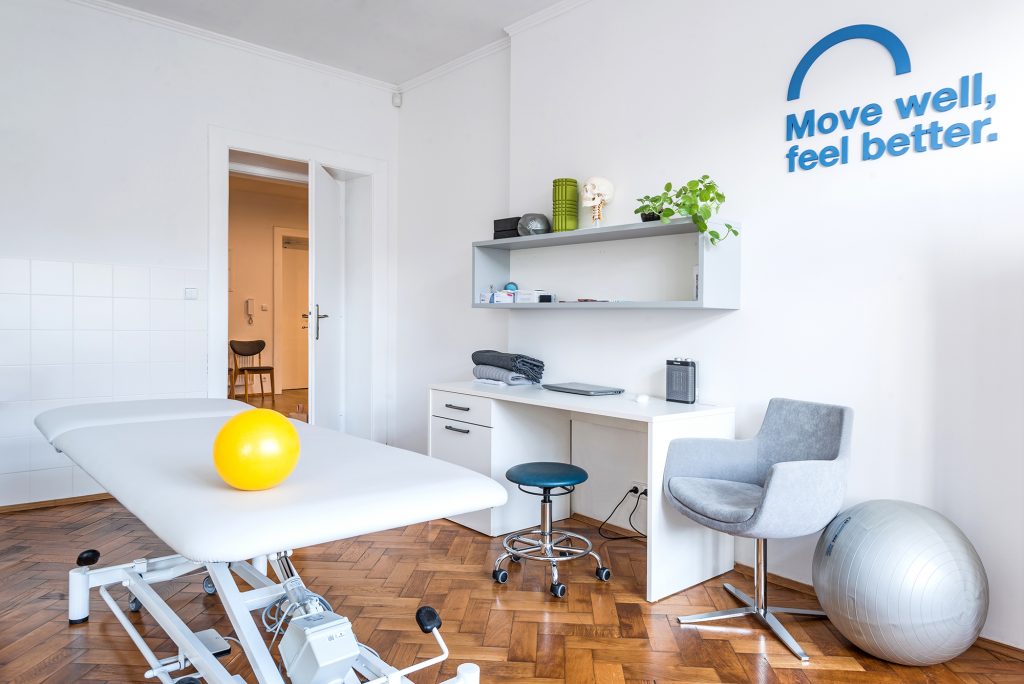7 Most Common Causes of Shoulder Pain
The shoulder is anatomically and functionally a complex joint. It consists of four interconnected joints: the connection of the humerus and scapula, clavicle and scapula, clavicle and sternum, and the false joint of the scapula and rib cage. Each of these joints plays its role in shoulder movement, and dysfunction in any of them can limit the shoulder’s function. At the same time, it is the most mobile joint among more than 200 joints in the human body. This great mobility comes at the cost of stability and a higher susceptibility to injury. The socket of the shoulder joint is shallow, covering only about one-third of the humeral head, making it even more critical that the joint is stabilized during movement by muscles, ligaments, fascia, and other soft tissues.
Here we present specific painful conditions that most often bring clients to our clinics, along with explanations of the treatment process.
Impingement syndrom
- One of the first signs is pain when raising the arm sideways, radiating from the upper part of the shoulder (acromion) and down the middle or front side of the shoulder. Over time, night pain develops, making it impossible to lie on the affected shoulder.
- Movement into abduction (lifting the arm to the side) becomes limited (try moving your outstretched arm to the side away from your body) – the first 60° of movement is mildly painful, and pain increases significantly beyond 120°. Internal rotation of the shoulder joint also becomes painful (for example, scratching between your shoulder blades or fastening a bra).
- The cause of the pain is compression of soft tissues (bursa and muscle tendons) between the humeral head and acromion (a bony projection on the scapula that extends to the outer side of the shoulder).
- The problem often arises from long-term overuse of the shoulder combined with poor posture (forward head, shoulders in a forward position), inappropriate working posture (sitting at a computer), or improper technique during sports activities (volleyball, tennis, handball, or weightlifting). Impingement syndrome can also develop following a shoulder injury (a fall on the shoulder while skiing, a bike fall, or hitting a wall in sports).
- The compression of the tendon can also be caused by the anatomical shape of the acromion or degenerative changes in the rotator cuff (the tendons of muscles that rotate the shoulder).
- If left untreated and the pain is ignored, the condition can become chronic. Initial severe symptoms may gradually fade, and pain may only occur occasionally. It may seem as though the problem is gone, but the shoulder may still move “differently,” and pain is felt with certain movements. This is often a protective mechanism where the muscles and soft tissues “stiffen” to stabilize and protect the damaged shoulder joint. This can lead to changes in the structure of tendons and ligaments, calcium deposits, and the formation of calcifications. The treatment becomes longer and more complicated and may even require surgery. Therefore, it is always better to address the problem early.
Treatment of Impingement Syndrome at Fyzio Svět
If the pain is very severe (acute phase), pain relief measures are recommended. This may include nonsteroidal anti-inflammatory drugs (NSAIDs) or a corticosteroid injection to reduce inflammation. The next step is to relieve muscle spasms and, most importantly, address the root cause of the impingement – the misalignment of the shoulder causing tendon compression. We work on releasing soft tissues and trigger points, mobilizing spinal and rib blockages, and correcting muscle imbalances. We retrain proper movement patterns and support the healing process with shockwave therapy, which releases tension, improves metabolism, and accelerates tissue repair by increasing blood flow and promoting regeneration in the compressed area. Proper physiotherapy reduces pain and can prevent the need for surgery.
Long Head of Biceps Tendon Syndrome
- The pain typically occurs at the front of the shoulder when lifting the arm in front of the body while bending at the elbow (carrying a tray), during bench press, overhead presses, or during underhand strikes in sports. Movements where the arm moves behind the body and any activity engaging the biceps worsens the pain (e.g., working with heavy tools, window cleaning, painting).
- The inflammation of the tendon is diagnosed via ultrasound. The tendon becomes swollen due to muscle overload, which may not only be caused by overuse of the biceps but also poor cooperation between the muscles that stabilize the scapula and shoulder girdle. When the shoulder is unstable, the biceps overcompensates, leading to tendon overload.
Treatment at Fyzio Svět
Treatment starts with releasing trigger points and applying manual techniques to the biceps and the muscles involved in arm movement. After treating the muscles and fascia, mobilization techniques are used to free the scapula and any blockages in the cervical and thoracic spine or ribs. In cases of severe pain, pain relievers and anti-inflammatory drugs may be temporarily used. After the acute phase subsides, we incorporate active exercises to reintegrate the biceps into shoulder movements without overloading it. Proper engagement of core, back, and abdominal muscles is crucial to treating shoulder pain caused by overload.
Calcifying Tendinitis of the Shoulder
- Calcifying tendinitis is characterized by the deposition of calcium salts (calcification) in the rotator cuff tendons. This calcification is preceded by long-term overuse of the muscles and tendons.
- The critical area is the tendon of the supraspinatus muscle, which passes under the acromion and attaches to the humerus. Chronic compression of the soft tissues in this area disrupts blood supply to the supraspinatus. The pain is similar to impingement syndrome, located in the upper shoulder along the deltoid muscle and extending to its attachment.
- There is a rapid reduction in shoulder mobility, and the shoulder muscles begin to weaken.
Treatment of Calcifying Tendinitis at Fyzio Svět
Rehabilitation is similar to the treatment for impingement syndrome. We identify the overuse mechanism and work to minimize or compensate for it. In some cases, shockwave therapy is highly effective, helping to break down calcium deposits and facilitate their removal via the circulatory and lymphatic systems. Exercises that improve shoulder positioning and movement are key to long-term pain relief.
Subacromial Bursitis (Inflammation of the Subacromial Bursa)
- Subacromial bursitis is the inflammation of the bursa, a fluid-filled sac that cushions and separates the rotator cuff tendons from the acromion. The bursa acts as a buffer to protect the tendons from rubbing against the bone during movement.
- Bursitis is often part of other conditions like impingement syndrome or calcifying tendinitis, and it indicates improper shoulder alignment and function.
- It is characterized by pain at rest, which can disrupt sleep, and pain during movement in all directions.
Treatment of Subacromial Bursitis at Fyzio Svět
The goal is to calm the inflammation – rest and medication are key. Manual techniques are used to release tension in the rotator cuff muscles, improving circulation and initiating healing processes around the bursa. Mobilization techniques are applied to the shoulder joints and surrounding areas, improving the dynamics of the cervical and thoracic spine. Gentle traction and kinesiotaping are often well received by clients. If treatment is delayed, surgery may be necessary in some cases.
Frozen Shoulder Syndrome
- Frozen shoulder is characterized by sharp pain and a progressive reduction in shoulder movement in all directions, as if the shoulder is “frozen” and unable to move.
- Both active and passive movements in the shoulder are restricted.
- At first, pain occurs only with movement, but over time, it can persist at rest and disrupt sleep.
- The cause is unknown, but previous injuries, impingement syndrome, long-term immobilization (e.g., cast/splint), autoimmune diseases, thyroid dysfunction, or diabetes may contribute.
- The pain is caused by inflammatory tightening of the joint capsule.
- It most commonly occurs between the ages of 50 and 60, with a higher frequency in women, but it can also develop much earlier.
- The condition typically progresses in three stages. In the acute stage, there is intense pain and a gradual reduction in movement. In the second stage, pain subsides, but movement remains restricted. In the final stage, mobility gradually returns. Each stage lasts approximately 3 to 4 months.
Treatment of Frozen Shoulder at Fyzio Svět
Treatment is tailored to the stage of the condition. In the acute stage, pain relief and support for tissue metabolism are the primary goals. We use relaxation and traction techniques, along with kinesiotaping. Manual therapy focuses on the chest, scapula, and spine, with a strong emphasis on fascial release to restore tissue mobility. Gradually, as the pain diminishes, we introduce more active movements to restore full shoulder mobility. Treating frozen shoulder requires patient cooperation and persistence.
Rotator Cuff Tears
- Rotator cuff tears involve damage to the common attachment of several shoulder muscles (rotators) and can result from a single injury or long-term overuse.
- Pain occurs at rest, during activity, and even at night. Active movement is restricted, while passive movement remains unaffected. Muscle weakness, especially in the supraspinatus and deltoid muscles, is common.
- The rotator cuff includes four muscles: supraspinatus, infraspinatus, subscapularis, and teres minor. These muscles are responsible for rotating the humerus and stabilizing the shoulder joint during movement.
- The extent of the injury is evaluated based on the size of the tear and the number of affected muscles. Accurate diagnosis typically requires an MRI.
Treatment of Rotator Cuff Tears at Fyzio Svět
In most cases, surgical repair is necessary to stitch the torn tendons. The shoulder is immobilized for 6 weeks post-surgery, with no active movement allowed during this period. Passive movements guided by the physiotherapist are performed initially. Scar mobilization is crucial to restore tissue flexibility. Lymphatic massage or taping can reduce swelling and support lymphatic drainage.
After six weeks, active exercises are introduced to strengthen the muscles and restore proper muscle coordination, preventing overuse and further injury. Kinesiotaping and exercises in the pool can be used as supportive techniques.
houlder Dislocation and Instability
- Shoulder dislocation most often occurs after a fall onto the arm, causing the humeral head to pop out of the socket and potentially damaging the joint capsule, ligaments, and cartilage.
- This is an acute and extremely painful condition.
- The humeral head can often be felt on the front of the body, and any movement is impossible.
- If the joint does not spontaneously relocate, a doctor must perform a reduction maneuver to return the shoulder to its proper position.
Treatment of Shoulder Dislocation at Fyzio Svět
In acute cases, a reduction maneuver is required, followed by shoulder immobilization. Since dislocation involves trauma to the structures stabilizing the shoulder, proper fixation is essential for tissue healing. The shoulder is typically immobilized for 6 weeks, during which rehabilitation focuses on maintaining mobility in the spine, wrist, and hand, as well as reducing swelling. Active rehabilitation begins after 6 weeks, avoiding abduction beyond 45° and excluding external rotation. Abduction up to 90° is allowed after 8 weeks, with gradual introduction of external rotation. Full abduction and maximum external rotation should be avoided for 3 months post-injury.
After the immobilization period, we work on restoring tissue mobility and gradually rebuilding full shoulder mobility, strength, and stability to prevent chronic shoulder instability.
